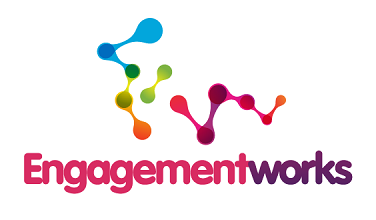This time each year New Zealand’s 78 local councils are engaged in annual or long-term plan discussions with their communities. These discussions are intended to focus on ratifying council plans, priorities and related expenditure that shape the size of the taxes levied on ratepayers as rates and other targeted costs for specific council services.
While the purpose and nature of these discussions is known to most contributors, councils often receive submissions that have nothing to do with matters relating to the annual plan. A classic example of such a matter is whether or not fluoride should be added to potable water delivered through a council’s water supply infrastructure.
For a small number of New Zealanders this is an extremely contentious matter. However many others are comfortable with the dental health benefits associated with fluoride and with the assurances provided by the Medical Officer of Health and other reputable agencies.
That said, the anti-fluoride movement has enjoyed some successes in recent years, forcing the removal of added fluoride from drinking water in several towns and cities. These decisions to support the anti-fluoride movement were made by councillors, sometimes with little reference to medical science and often with little discussion with the wider affected community. Hamilton City’s decision to remove fluoride from that city’s drinking water is a good example, where a subsequent referendum on this matter showed that there was overwhelming support for fluoride to be included.
Annual plan submissions are usually the entry point for influencing council decisions on fluoride, probably because for many people this is the only channel they see as being available to express concern about what a council does. But that’s not the best way of handling matters like this, the related costs can be high for a council’s bureaucracy, and the anti-fluoriders have probably figured that they can grind councils down by continually using the annual plan channel.
Some councillors are feeling exposed and there is a growing mood that fluoridisation of drinking water is a decision that should be made by the Ministry of Health, rather than by individual councils.
I think that is the wrong way of looking at this particular issue. Left to the council annual plan submissions process, this matter will reappear annually. That is just silly.
Any decision about fluoridisation needs to be made once, whether that’s on a national or local basis, and decoupled from annual council planning.
It’s an issue that should be taken to affected communities and their opinions sought. Community members should consider the evidence provided by scientists, medical experts and those who believe that adding fluoride to drinking water is a risky, toxic practice. Affected communities should be given the authority to make that decision, to be endorsed by councillors. That discussion could also include a timeframe for revisiting the decision made, if the affected community believed that to be necessary.
Councillors are supposed to be representative of their community’s views and should not be put into positions where they can be bullied by interest groups. Being representative does not prevent councillors delegating decision making to communities on certain matters, particularly those involving high levels of emotion, as long as a robust, inclusive process is used.
The Ministry of Health could take charge of this matter, but ultimately this is a decision that affects individual communities, and what better way is there for those communities to determine their desired future than through their council.
While the purpose and nature of these discussions is known to most contributors, councils often receive submissions that have nothing to do with matters relating to the annual plan. A classic example of such a matter is whether or not fluoride should be added to potable water delivered through a council’s water supply infrastructure.
For a small number of New Zealanders this is an extremely contentious matter. However many others are comfortable with the dental health benefits associated with fluoride and with the assurances provided by the Medical Officer of Health and other reputable agencies.
That said, the anti-fluoride movement has enjoyed some successes in recent years, forcing the removal of added fluoride from drinking water in several towns and cities. These decisions to support the anti-fluoride movement were made by councillors, sometimes with little reference to medical science and often with little discussion with the wider affected community. Hamilton City’s decision to remove fluoride from that city’s drinking water is a good example, where a subsequent referendum on this matter showed that there was overwhelming support for fluoride to be included.
Annual plan submissions are usually the entry point for influencing council decisions on fluoride, probably because for many people this is the only channel they see as being available to express concern about what a council does. But that’s not the best way of handling matters like this, the related costs can be high for a council’s bureaucracy, and the anti-fluoriders have probably figured that they can grind councils down by continually using the annual plan channel.
Some councillors are feeling exposed and there is a growing mood that fluoridisation of drinking water is a decision that should be made by the Ministry of Health, rather than by individual councils.
I think that is the wrong way of looking at this particular issue. Left to the council annual plan submissions process, this matter will reappear annually. That is just silly.
Any decision about fluoridisation needs to be made once, whether that’s on a national or local basis, and decoupled from annual council planning.
It’s an issue that should be taken to affected communities and their opinions sought. Community members should consider the evidence provided by scientists, medical experts and those who believe that adding fluoride to drinking water is a risky, toxic practice. Affected communities should be given the authority to make that decision, to be endorsed by councillors. That discussion could also include a timeframe for revisiting the decision made, if the affected community believed that to be necessary.
Councillors are supposed to be representative of their community’s views and should not be put into positions where they can be bullied by interest groups. Being representative does not prevent councillors delegating decision making to communities on certain matters, particularly those involving high levels of emotion, as long as a robust, inclusive process is used.
The Ministry of Health could take charge of this matter, but ultimately this is a decision that affects individual communities, and what better way is there for those communities to determine their desired future than through their council.


 RSS Feed
RSS Feed
